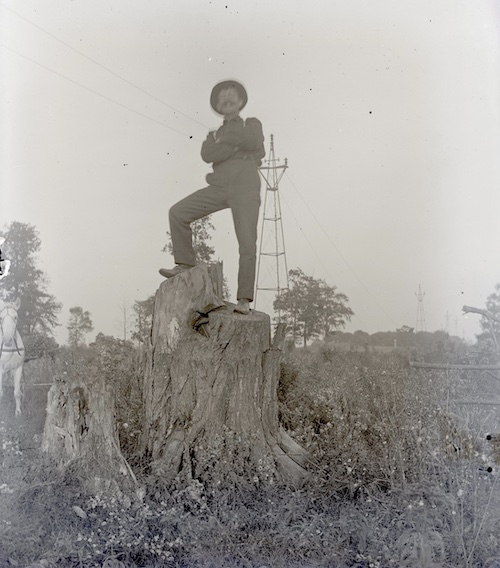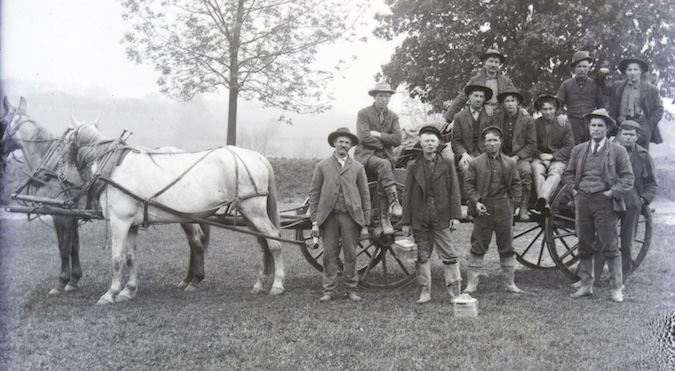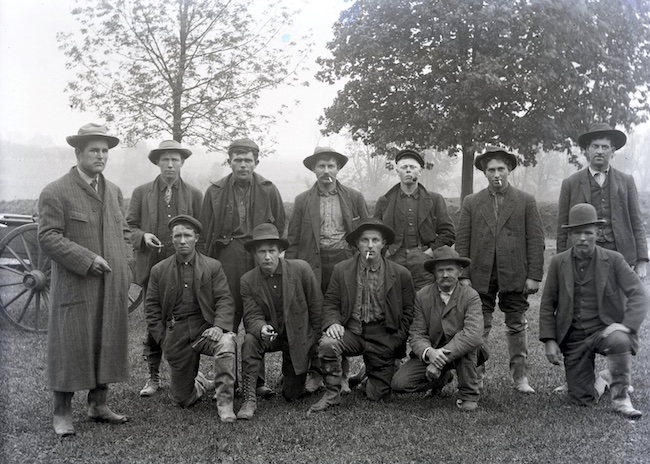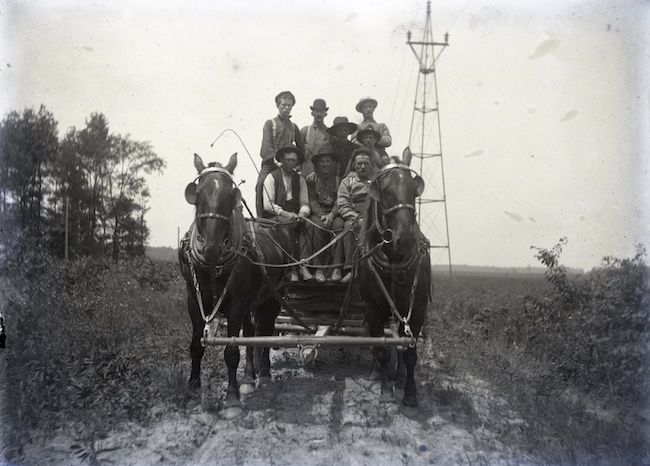More than a century ago, putting in transmission lines for electricity altered landscape
By Catherine Cooper, Orleans County Historian
Illuminating Orleans, Vol. 2, No. 33
The transmission towers that run through the countryside are such a familiar aspect of the landscape that we take them for granted. But at the time, they dramatically altered the visual landscape, just as solar and wind installations do nowadays.
A 160-mile long power transmission line, which stretched from the Niagara River to Syracuse, went into service on July 7, 1906. It was operated by the Niagara, Lockport and Ontario Power Company and transmitted power generated by the Ontario Power Company from water taken from the Niagara River.

Blast on the powerline, Shelby, 1905
The Medina Tribune reported on Dec. 22, 1904, that a corps of engineers and workmen were surveying and laying the line from Lockport to Rochester and that the transmission lines were to be carried on steel towers instead of poles.
The men who erected these structures became known as linemen. Many were itinerant workers called “boomers” who travelled from city to city as new projects began. The work was difficult and dangerous. Often inadequately trained, the power linemen faced the hazards of falling and electrocution. It was estimated that one out of three-line workers died on the job.
Armed with a new Kodak camera, Scott Dunlap, then a young Shelby teen, photographed the power linemen who worked on the project installation just south of his family home on Dunlap Road in 1904-05. No doubt the project caused interest and commotion with its attendant blasting, digging, heavy equipment and teams of workers. We are fortunate that Mr. Dunlap recorded it, particularly since his photographs are remarkable for their clarity and composition. He captured the human element of the project, the faces of the men who did the work.

This group of power linemen are photographed with an M-3890 insulator which was developed to prevent flashover during lightning strikes. The middle and bottom shells had upward curving skirts referred to as a “lily-shell” design.

Power lineman poses with transmission towers in the background.

Group of power linemen, Shelby, 1905

Group of power linemen with cigarettes, Shelby.































































